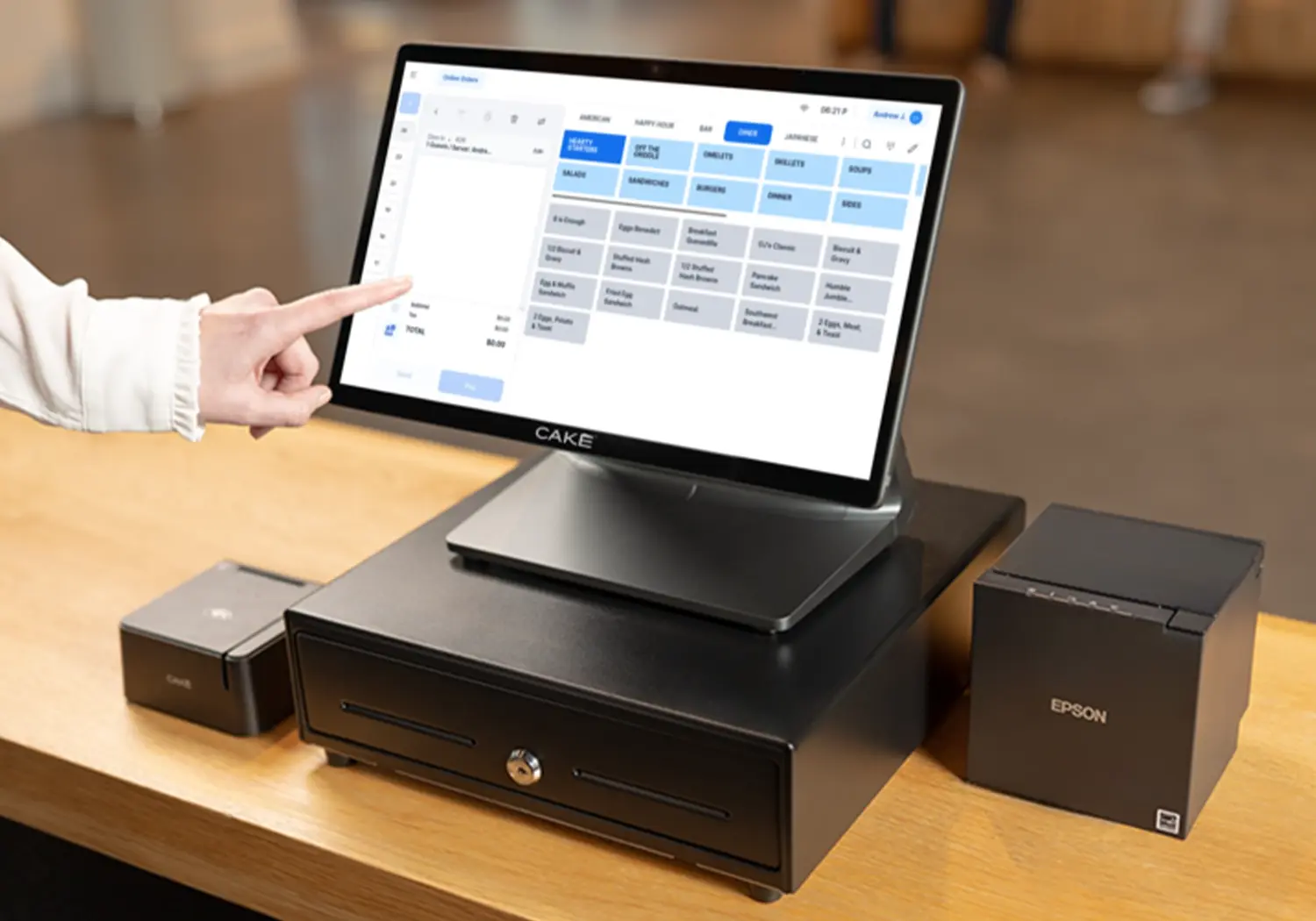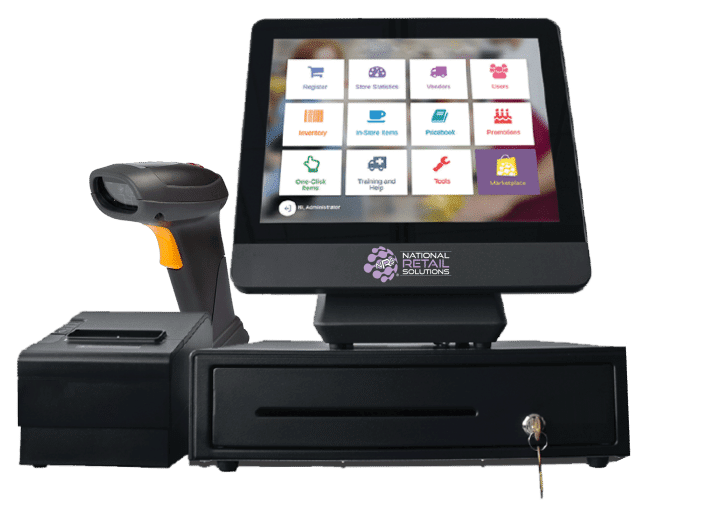POS Software : The Point-Of-Sale System Simplifies Checkout Processes Efficiently
Unpacking the Power Behind Point of Sale Systems
Have you ever paused to consider what takes place the moment you swipe your card or tap your phone at a checkout? That flash activates a waterfall of processes, orchestrated by sophisticated Point of Sale Systems. Far from being mere cash registers, these systems act as the digital heartbeat of retail operations, weaving together sales data, stock, and consumer interaction.
Imagine a busy café where the barista manages orders, payments, and commitment benefits all at when. The POS system isn't simply a tool-- it's the hidden partner guaranteeing every cappuccino is represented, every discount rate used correctly, and every client leaves satisfied. POS Machine. It's the difference between mayhem and seamless service
Core Functions That Drive Efficiency
- Sales Deal Management: Tracks each purchase with accuracy, making sure accuracy in billing and invoices.
- Inventory Control: Instantly updates stock levels, signaling when it's time to reorder.
- Customer Data Collection: Gathers insights for personalized marketing and loyalty programs.
- Worker Tracking: Schedules shifts and records hours worked.
Why Does This Matter?
Consider the last time you waited in a long checkout line. Frustrating? A well-implemented POS system slashes wait times by streamlining payment procedures, minimizing human mistake, and syncing sales with backend operations in real-time. It resembles having a conductor directing every note in the symphony of retail.
| Feature | Benefit | Effect |
|---|---|---|
| Real-Time Analytics | Instant sales reporting | Better decision making |
| Mobile Compatibility | Checkout anywhere | Enhanced customer experience |
| Integrated Payments | Several payment alternatives | Increased sales chances |
Doesn't it make you wonder how companies ever handled without these systems? In a world where every 2nd counts, the POS is no longer simply a benefit-- it's a need.
Decoding the Celestial Puzzle
When peering into the night sky, have you ever questioned how ancient mariners pinpointed their area click here without contemporary innovation? Positional astronomy is the art and science behind that celestial navigation. Why does understanding the exact position of stars and worlds matter? Because even a minute mistake can send you miles off course, particularly when counting on the stars as your compass.
The Subtle Intricacies of Coordinate Systems
One might think the sky is a basic canvas, however it's a vibrant sphere dotted with moving targets. The equatorial coordinate system. Point of Sale-- right ascension and declination-- mimics Earth's own geography, but with a twist. The Earth's axis wobbles, a phenomenon referred to as precession, which discreetly moves star positions over years. This demands continuous recalibration. Have you ever observed how Polaris does not always sit precisely at the North Celestial Pole? That's precession at work
Tips from the Observatory
- Utilize a high-precision chronometer to measure sidereal time accurately; even seconds matter.
- Adjust your instruments often to account for climatic refraction, particularly near the horizon.
- Cross-check star brochures-- various epochs can yield varying coordinates.
- Utilize software that consider nutation and aberration for contemporary precision.
Astounding Anecdote
Consider the tale of a 16th-century navigator who, using rudimentary tools and naked-eye observations, determined his ship's position with unexpected accuracy. His secret? Mastery of celestial mechanics and a deep understanding that the stars, though seemingly fixed, become part of a cosmic dance.
Precision Demands Perseverance
Attempting to identify a star without considering atmospheric distortion resembles attempting to read a book through a frosted window. Even the best telescopes can be tricked by the environment's fickle layers. Perseverance, numerous observations, and averaging outcomes often reveal the true positional data. Isn't it fascinating how the sky's evident stillness masks such elaborate shifts?

Deciphering the Essence of Positive Operator-Valued Procedures
Envision trying to catch a shadow's real shape in a world where light bends unpredictably. Favorable Operator-Valued Measures (POVMs) perform a comparable task in quantum mechanics-- measuring states where classical instinct stops working. Unlike the neat sharpness of projective measurements, POVMs enable a richer tapestry of results, weaving likelihoods from operators that aren't necessarily orthogonal. Why settle for the mundane when you can paint with the complete scheme of quantum possibilities?
Quantum Measurement Beyond Standard Limits
Traditional measurements feel rigid, however POVMs offer versatility. In practice, they emerge from coupling a system with an ancilla, then carrying out projective measurements on the combined system. This method extends the horizon of what can be observed. Ever wondered how to optimize information extraction without disturbing fragile quantum states? POVMs are the key.
- Non-orthogonality: Unlike projectors, POVM aspects overlap, enabling nuanced detection methods.
- Efficiency: The amount of all POVM aspects equates to the identity operator, ensuring overall likelihood.
- Physical Realizability: Any POVM can be carried out via Neumark's dilation theorem, linking abstract math to laboratory experiments.
Specialist Tips for Navigating POVM Application
Handling POVMs in practice isn't minor. Quantum sound and decoherence sneakily distort your perfect operators. To fight this:
- Style POVMs customized to your speculative setup-- customization beats one-size-fits-all every time.
- Use convex optimization algorithms to find the optimal POVM that makes the most of information gain for your quantum state discrimination job.
- Remember, the subtle interplay in between operator positivity and measurement efficiency governs the compromise in between precision and disruption.
Hidden Complexities in POVM Applications
What does it imply when a POVM aspect is favorable but not a projector? This subtlety typically astonishes beginners however exposes a profound reality: quantum measurements do not have to be sharp to be informative. In cryptographic procedures, for example, utilizing POVMs instead of projective measurements can improve security by extracting info more gently, leaving less traceable disruption.
| Feature | Projective Measurement | POVM |
|---|---|---|
| Operator Type | Orthogonal Projectors | Positive Semidefinite Operators |
| Measurement Results | Fixed, sharp | Flexible, probabilistic |
| Implementation | Direct on system | Needs secondary systems |
| Details Extraction | Often restricted | Optimizable and richer |
Comprehending the Intricacies of Proof of Stake
Envision a world where blockchain validators do not race to resolve puzzles but rather stake their assets, indicating trust and dedication. This is the essence of the Evidence of Stake (PoS) system. Yet, underneath its sophisticated surface area lies a complex dance of rewards and security procedures. Why does staking more tokens increase your opportunity to verify the next block? Because it lines up economic incentives, making efforts to defraud the network excessively costly.
The Subtle Threats of Stake Centralization
One might ask: could a handful of stakeholders overpower a network? The concentration of staked tokens in couple of hands may skew the decentralization suitable, leading to oligarchic control over block development. This isn't just theoretical; it's a real tension in PoS systems. Efficient networks counteract this by implementing mechanisms such as:
- Slashing conditions that penalize harmful stars by confiscating staked tokens
- Randomized validator choice to prevent predictability
- Delegated staking models enabling token holders to entrust others without giving up ownership
Specialist Pointer: Timing Your Stake
Skilled validators understand that timing can be everything. Joining the staking swimming pool prematurely or late can affect benefits considerably. Network dates define windows where staking and recognition happen-- missing these might suggest forfeiting made benefits. Always integrate your staking activity with the network's date schedule to optimize yield.
Energy Effectiveness and Security: A Delicate Balance

| Aspect | Evidence of Stake | Proof of Work |
|---|---|---|
| Energy Intake | Minimal, sustainable | High, resource-intensive |
| Attack Expense | Stake loss, economic disincentive | Pricey hardware and electrical power |
| Block Finality | Faster due to financial locks | Slower due to probabilistic confirmation |
Rethinking Security Assumptions
One often neglected element is the "nothing at stake" predicament. Validators may be lured to sign several contending chains, considered that it costs them absolutely nothing directly-- unlike Evidence of Work where energy expense prevents this. Advanced PoS systems fix this with charges and checkpointing, ensuring validators stake their reputation as much as their tokens. Have you considered how this impacts your rely on a network?
Point of Sale Solutions in North Carolina
North Carolina is a vibrant state understood for its varied economy and abundant cultural heritage. With a population surpassing 10 million, it boasts thriving city centers such as Charlotte and Raleigh, which are hubs for financing, technology, and education. Visitors and homeowners enjoy tourist attractions like the Blue Ridge Mountains, historic websites in Asheville, and the stunning Atlantic coastline. The state also has a strong entrepreneurial spirit, making it a perfect environment for companies to adopt effective point of sale systems to enhance operations and improve client experiences.
For skilled recommendations and a totally free assessment on point of sale options, connect to Brilliant POS. They supply knowledgeable guidance tailored to your specific organization requirements.